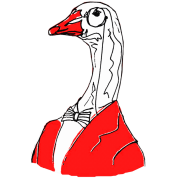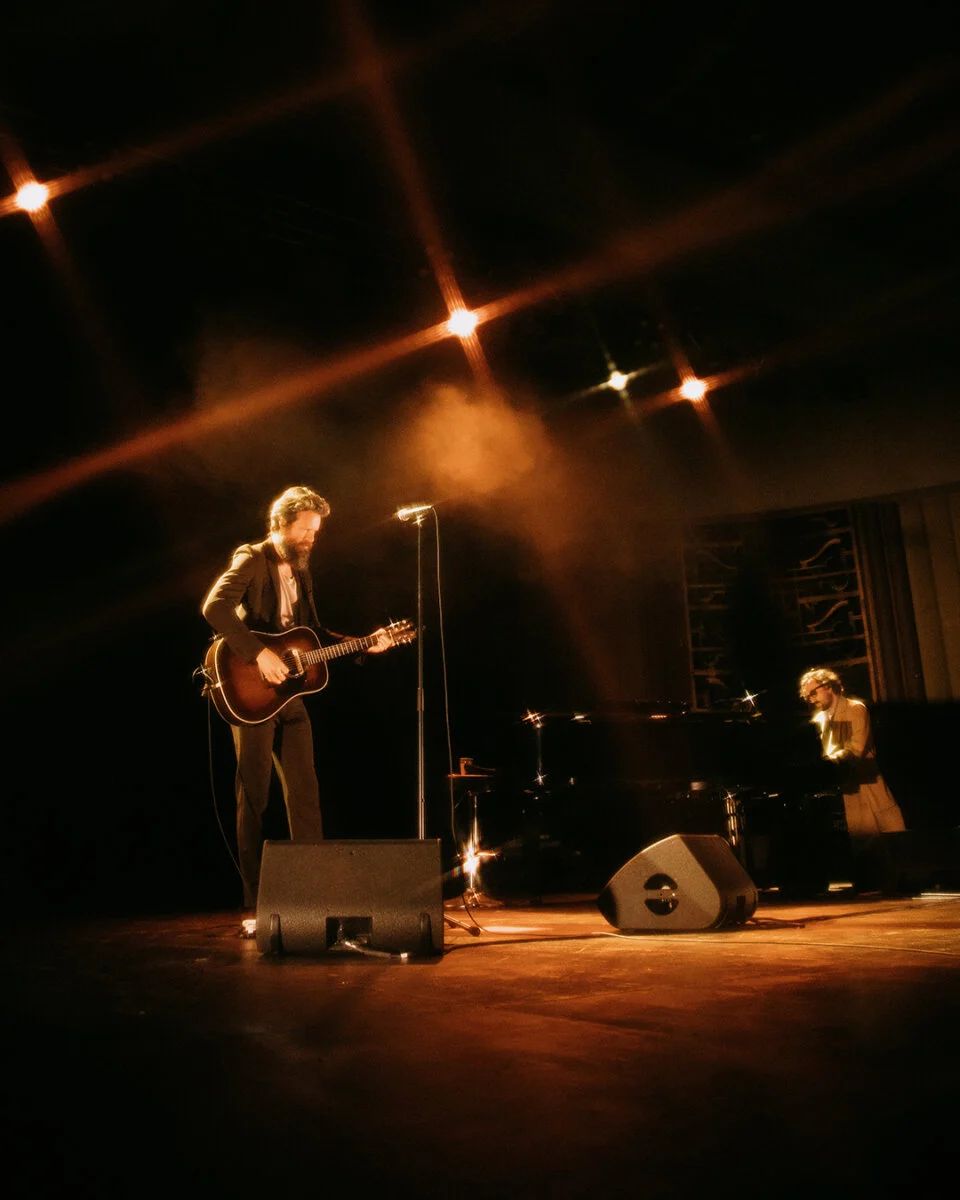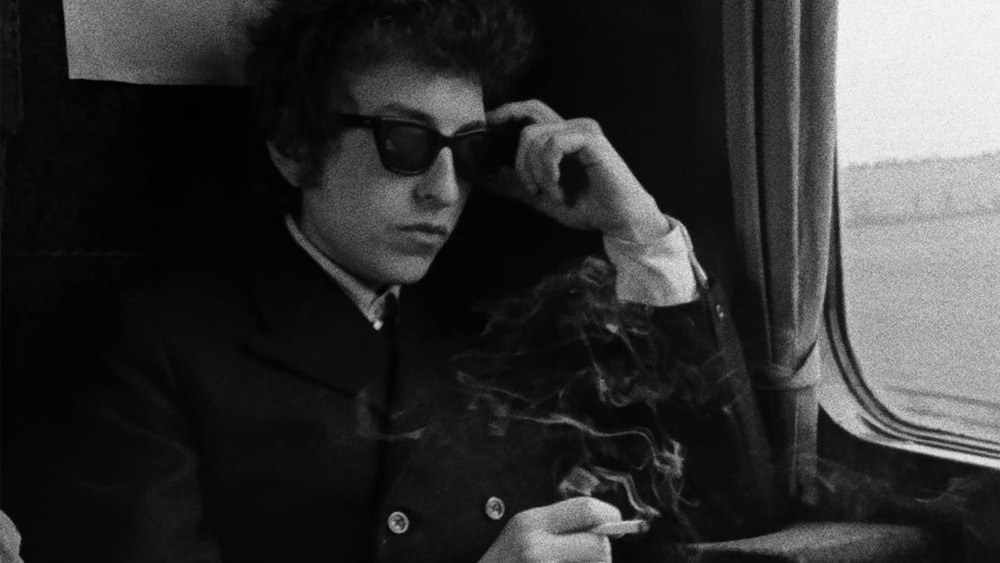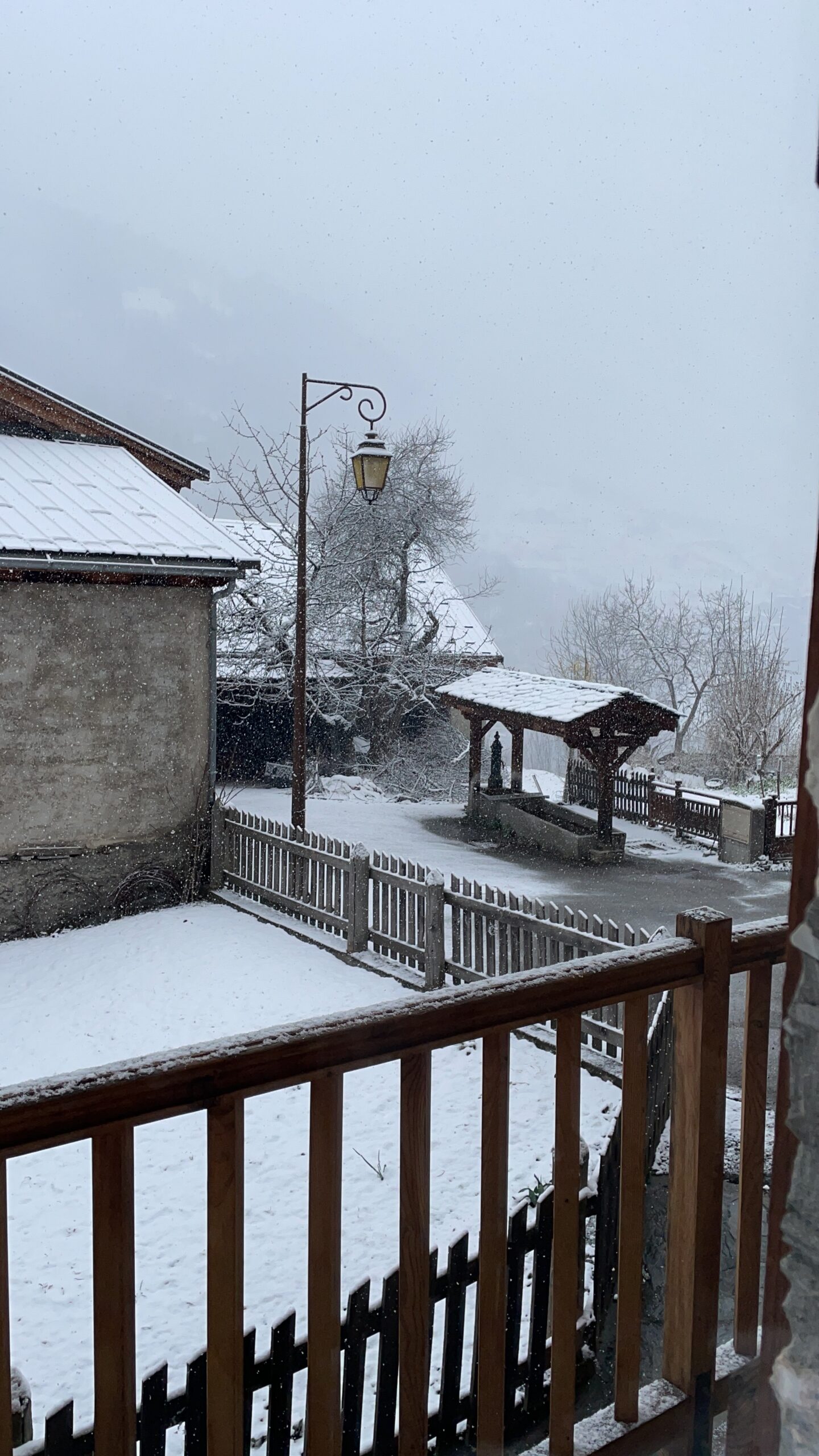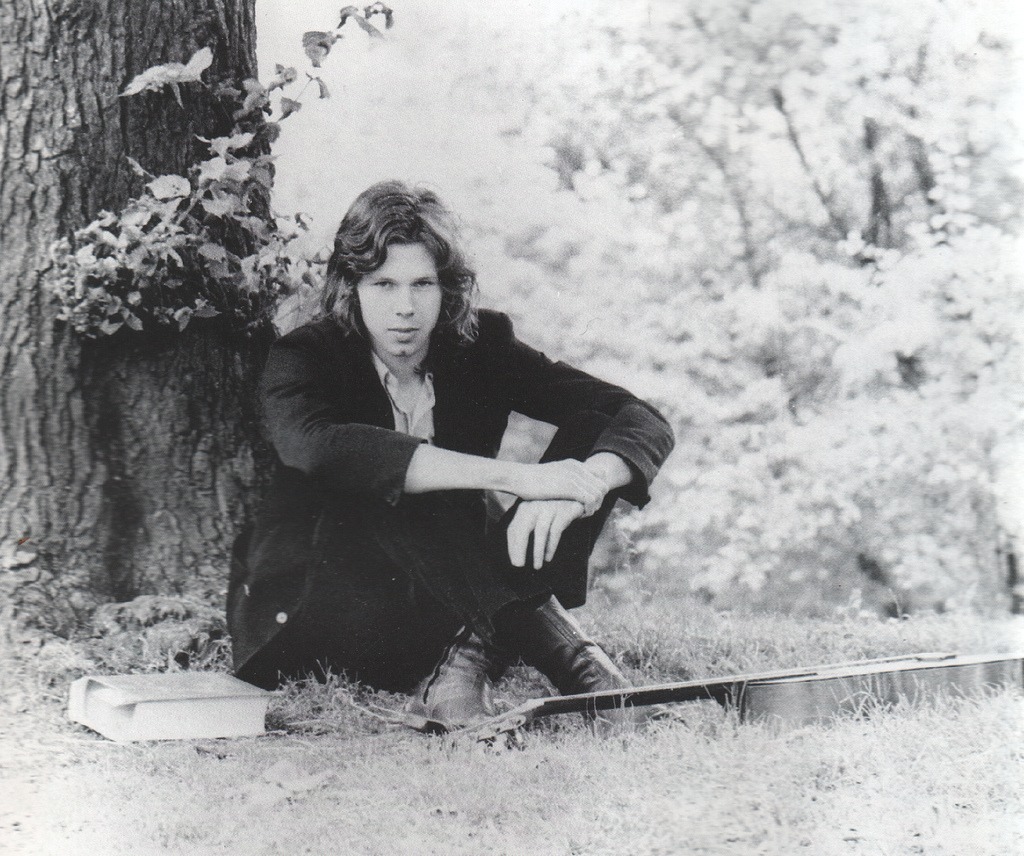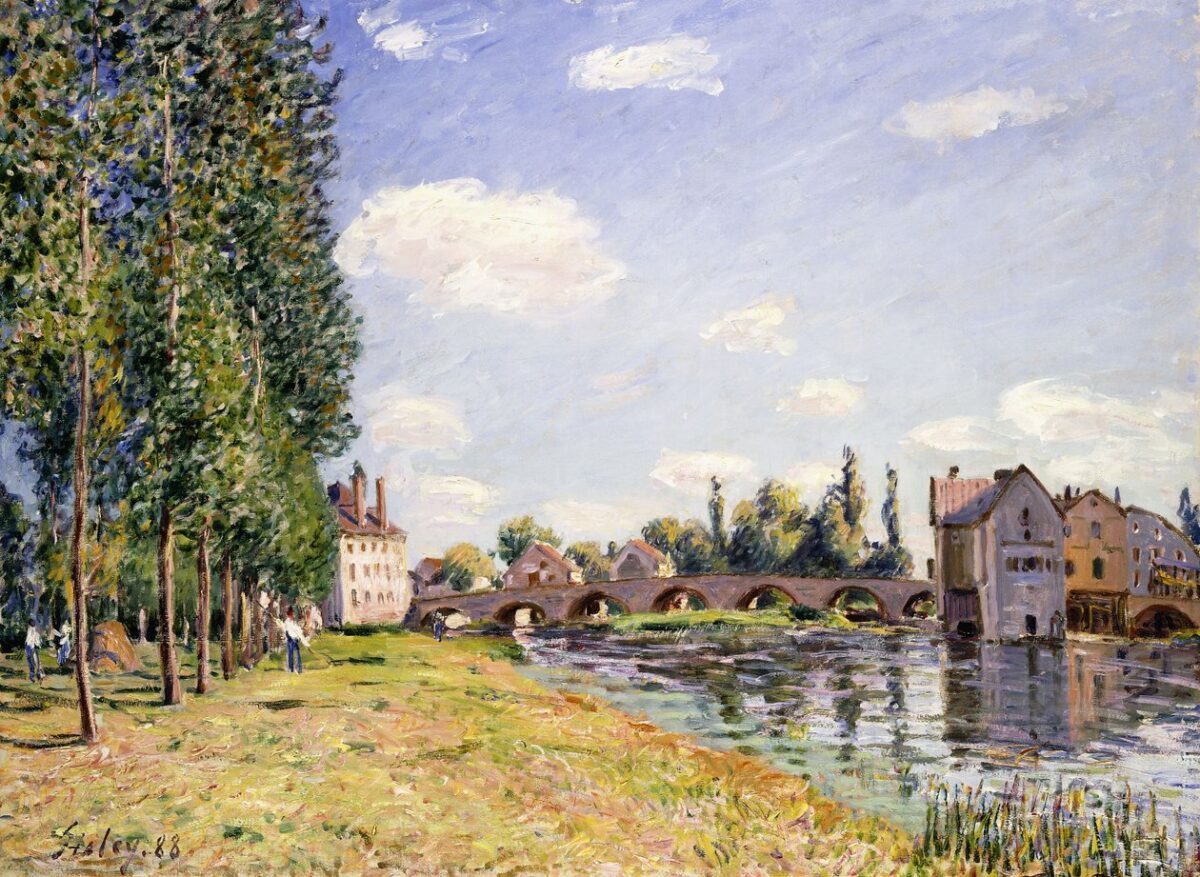By Matthew Dodd
Josh Tillman – the artist currently known as Father John Misty – takes to the stage of the century-and-a-half old Royal Albert Hall with typical sangfroid. It’s four songs before Tillman deigns to speak to his crowd, sardonically quipping that ‘this is the most dignified place I’ve ever been in, and I went to the Sphere in Vegas.’ The singer-cum-hipster-messiah is, allegedly, playing in support of two projects: his latest album, 2024’s Mahashmashana, as well as a tenth-anniversary re-release of his breakthrough album I Love You, Honeybear. Both albums are well-represented on the setlist, but it’s hard not to see this performance as a wider celebration of an artist at the peak of his career. That said, this is nothing like a greatest hits showcase. Neither of his collaborations with Lana Del Rey (Buddy’s Rendezvous and Let the Light In) are played, nor his TikTok-ified megahit Real Love Baby. Instead, Tillman shines a light on and, with the help of an exceptional backing band, rejuvenates underappreciated numbers from his extensive discography, such as 2018’s Dissapointing Diamonds Are the Rarest of All and encore track So I’m Growing Old on Magic Mountain, the latter of which he describes as ‘another interminable meditation on ageing.’ Tillman has been pondering ageing, particularly in a time of global crisis, for much of his career, but there is a time-earned maturity about his performance now, the self-effacing humility of a performer who knows all too well how he’s perceived and has no desire to change.
Father John Misty, heretofore referred to by his birth name, has always had the aspect of a man out of time, whether as an old-fashioned singer-songwriter in a world of corporate pop music or a hipster millennial in an age of Gen Z post-irony, and this apex performance only solidifies his role as the brooding sage of contemporary indie. Publicly described by his peer Ryan Adams as ‘the most self-important asshole on Earth’, Tillman built a reputation as the most ‘online’ of his musical contemporaries, never one to shy away from a twitter controversy or a grandiose and divisive statement on any of his many opinions. For the best part of a decade, since 2016’s Pure Comedy, Tillman had taken a step back from social media and the press, chronicling the digital age from a concerted remove over his next two albums. Nevertheless, having returned to the internet last year, Mahashmashana finds Tillman as bogged down the esoterica of the ultra-online as ever: the Father John Misty merch table includes a T-Shirt of Tillman posed with the anime character Misato Katsuragi and the words ‘I WISH I WAS HIM’. It’s this peculiar concoction of cultural attitudes that makes Tillman such a compelling artist. He is a self-consciously conceited scribe of the digital age, hidden behind the deliberate artificiality of the Father John Misty character, and yet he is also one of the most open-hearted artists of his generation. Contradictions are central to his work, as is the faith required to accept them.
Raised in a staunchly Evangelical household, Tillman’s music interrogates the vacant space of religious meaning in a secular world. Across his work he tries at turns to plug this hole with technology and cultural overstimulation – ‘bedding Taylor Swift every night inside the Oculus Rift’ – before concluding that, ultimately, it is only love which can bring us peace – ‘I hate to say it, but each other’s all we’ve got’. His unique brand of post-modern fatalism and its paradoxical conjunction with a belief in the all-conquering power of love make him one of the few contemporary artists to feel truly contemporary, whose work aptly speaks to the antithetical, manifold anxieties of modern living. How can we continue to live and love in a world on fire? Tillman offers no relief, only a conciliatory suggestion that, in the grand machinations of a doomed world, our only choice as individuals is to keep on loving through it all. Yes, the world may be ending, but what’s that got to do with us? It’s a sentiment he sums up neatly in his closing number: ‘everything is doomed and nothing will be spared, but I love you, honeybear.’
Tilman is no stranger to self-mythologising. Indeed, at least three of the songs played (The Night Josh Tillman Came To Our Apt., Mr Tillman and Josh Tillman and the Accidental Dose) include his own name in their title. And yet, he revels in the periphery of mainstream acclaim. On opening song I Guess Time Just Makes Fools of Us All, he proudly quotes a description of himself as ‘easily the least famous to turn down the cover of Rolling Stone.’ There is an excitement in his self-proclaimed status as a pariah of the indie scene. Once the bad boy – the ‘precocious 33-year-old’ he cites as the author of his earlier songs – he is now the veteran provocateur, never content to coast off his back catalogue. Even last year’s Greatish Hits compilation was an excuse to foreshadow his next album. Brushes with mainstream success – his collaborations with Lana Del Rey and Real Love Baby’s adoption by the TikTok algorithm – seem only to have spurned him towards the new, the strange and the unconventional. Consequently, far from a sleepwalking retrospective on over a decade’s work, his Albert Hall set feels like the vibrant exhibition of an artist with everything still left to prove. If the Josh Tillman referenced in the aforementioned songs is the earnest romantic, Father John Misty is the prototypical showman. From the perfectly frazzled hair to the frankly sexual manipulation of a microphone stand, he owns his performance wholly and completely.
The religious element persists throughout Tillman’s music, from the satirical – tongue-in-cheek visions of a Mary Magdalene who, anticipating the crucifixion, ‘said no one’s fucking with my baby, Lord, and got armed to the teeth’ – to the sincere – a pleading cry to ‘roll the stone away, I wanna go where everyone’s perfect beneath their robes.’ Yet, it is difficult to miss the peculiarly mass-like quality of Tillman’s performance style. He renders the Royal Albert Hall a chapel, and he a prophet for the end times. His sermon is straightforward: a self-effacing condemnation of the irony-soaked cynicism wrought by modern living, and a plea for earnestness, for love, for art. The more meditative tone of Tillman’s latest album represents the artist at his most direct. On Mahashmashana’s lead single Screamland, a wall of ambient sound is splintered by the anthemic and brazenly simple chorus which, belted by an electronically enhanced Tillman, reverberates through every corner of the Hall: ‘stay young, get numb, keep dreaming.’ Father John Misty has never been more entertaining, more exciting, more essential.
